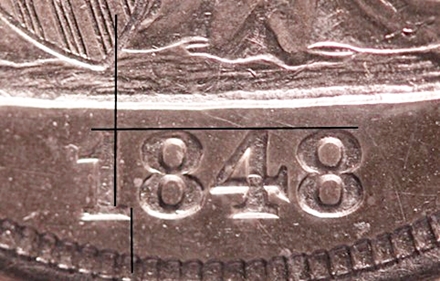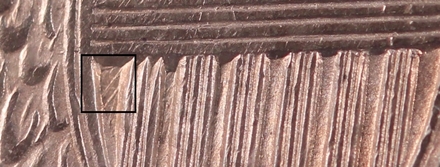|
|
Comments: This is the only use of Obverse 1 and the only use of Reverse A in 1848. Reverse A was subsequently used to strike business strikes in 1849, 1850, and 1851. Itís use in 1852 has been reported but not confirmed. |
Obverse 1 The photo below shows the Obverse 1 attribution grid:  1848 Obverse 1 attribution grid This is the only business strike obverse die. The date position provides enough information for conclusive attribution.
|
Reverse A 1848 Reverse A was well-documented in issue #120 of the Gobrecht Journal (reference 11). It was used for 4 years, 1848 through 1851. Its usage in 1852 is reported but unconfirmed. It features some notable die lines near the top of shield recess 1 and two tiny die lines in the middle of recess 4. The die lines in recess 4 arenít necessary for attribution of the 1848 reverse, but they become important as this reverse die is tracked through its subsequent usages. The next photo shows the die lines in recess 1.  1848 Reverse A die lines in shield recess #1
|
| Photo credits:
Obverse 1 and Reverse A: 1848 NGC AU58, from the Osburn-Cushing reference collection. |
